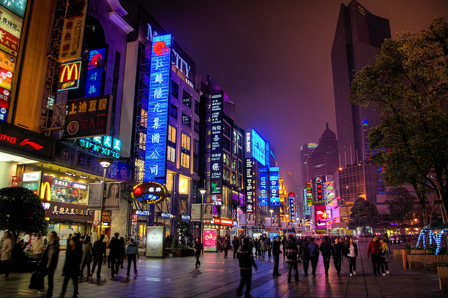The link might not be an obvious one, but the euro’s recent decline in value has been bad news for luxury fashion brands in China. The yuan has gained so much value against the euro that people are travelling all the way to Europe from China just to buy clothes on the cheap.
Despite the yuan falling slightly against the euro in recent months, in value has been increasing since May 2014. With each passing month the purchasing power of Chinese tourists has grown, with many taking the opportunity to buy expensive items at a considerable discount in Europe, either for themselves or to sell for profit back in China.
Usually the Chinese go to Hong Kong to enjoy its extensive shopping district, but that’s no longer the case. Pro-democracy protests taking place in the city have put many people off from making a shopping trip. Brands invested heavily in their Hong Kong shops to take advantage of shoppers there. With rents in the tens of thousands per month, and protests putting off many shoppers, the losses could be substantial.
>See also: Wimbledon’s winning mindset – lessons for business leaders
Luxury fashion brands are concerned. They want to make sales in China where they make more profit. The parallel (or grey) European market offers the same products at more appealing prices. Brands are losing out on Chinese sales as consumers get the real deal at significantly reduced rates in Europe thanks to the exchange rate.
So what can be done? Fashion bands have tried to take matters into their own hands, although their method isn’t so much a solution as an attempt to minimise the damage. Some have adjusted their prices in Asia to fend off competition from their European stores. They hope that making their products more affordable at home will make buying abroad at a discount less appealing to Chinese shoppers.
This may help the luxury brands reduce the problem but it still means a drop in prices and, ultimately, profits. This coupled with China’s slowing growth won’t be helping matters – or will it? While the fall in economic movement is likely to hurt the brands further, it has led to the Chinese government stepping in to find a fix.
The Chinese government plan is to bring import tariffs down by at least 20%. This means the brands can lower their prices in China without having to lose out on as much money. It’s a positive step for them, although it’s still not certain on what type of goods will actually be affected by the new import tariffs.
>Related: What’s in a name? The changing language of brands
It might not go exactly according to plan. 20% is all well and good, but if the products in Europe are 50% cheaper the West will still have its pull for those looking to save money or make it on the grey market.
The Eurozone is beginning to recover so you might expect the euro to increase in value and also aid China’s fashion stores, but there’s the chance the EU will want to keep euro value down for a while longer. Part of the economic bloc’s recovery is thanks to the weak euro encouraging exports, and with an 18 month quantitative easing programme starting back in March, it’s unlikely a strong euro will come to the rescue any time soon.
There might be some solace in Hong Kong’s quieting though. Protests have yet to return in the numbers they were seen in 2014. If that continues Chinese tourists may return there and bring some much needed revenue to the brands’ Hong Kong stores.






